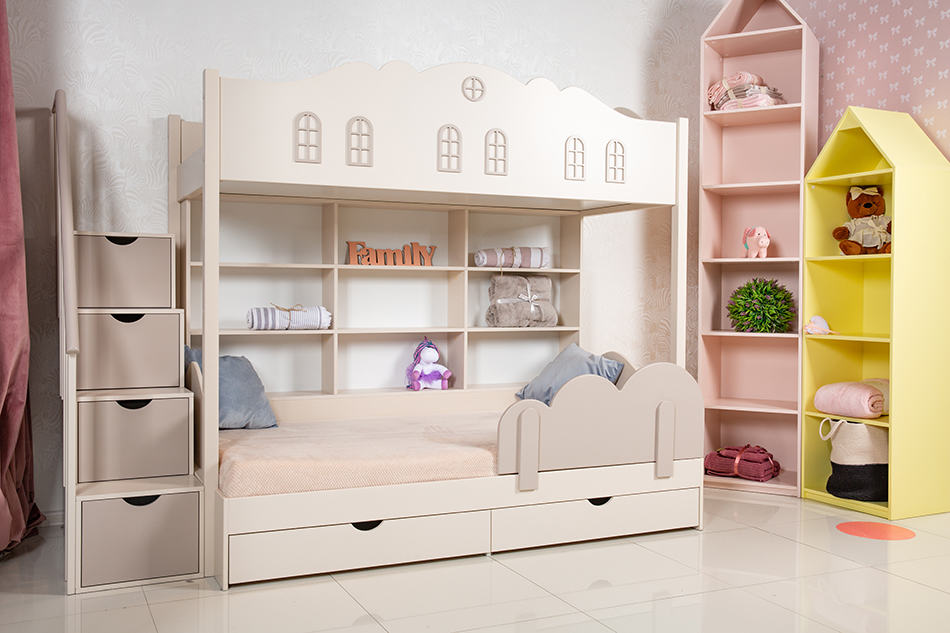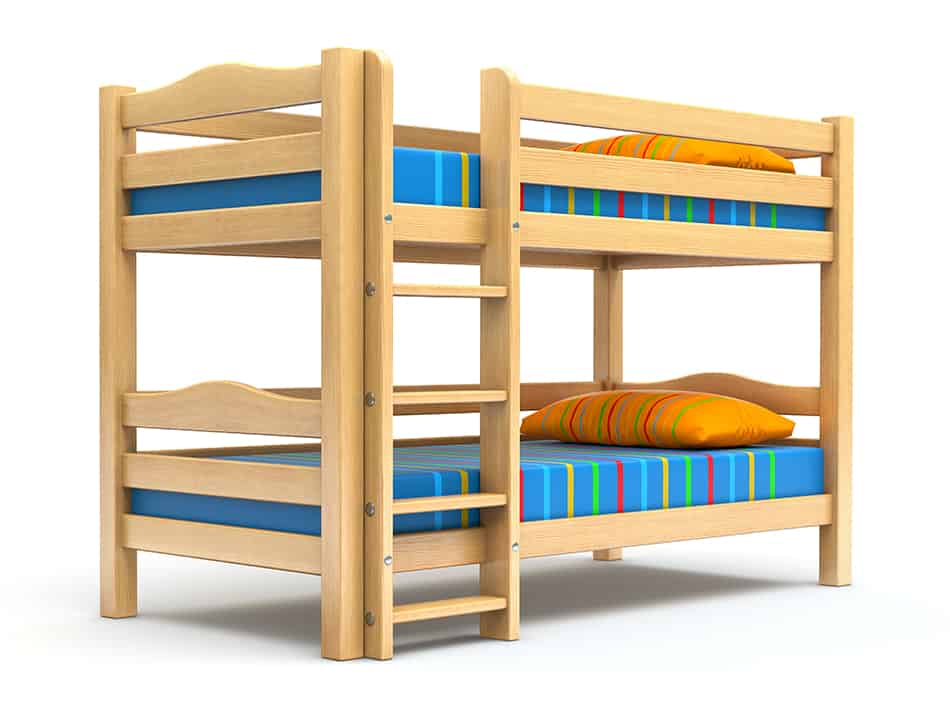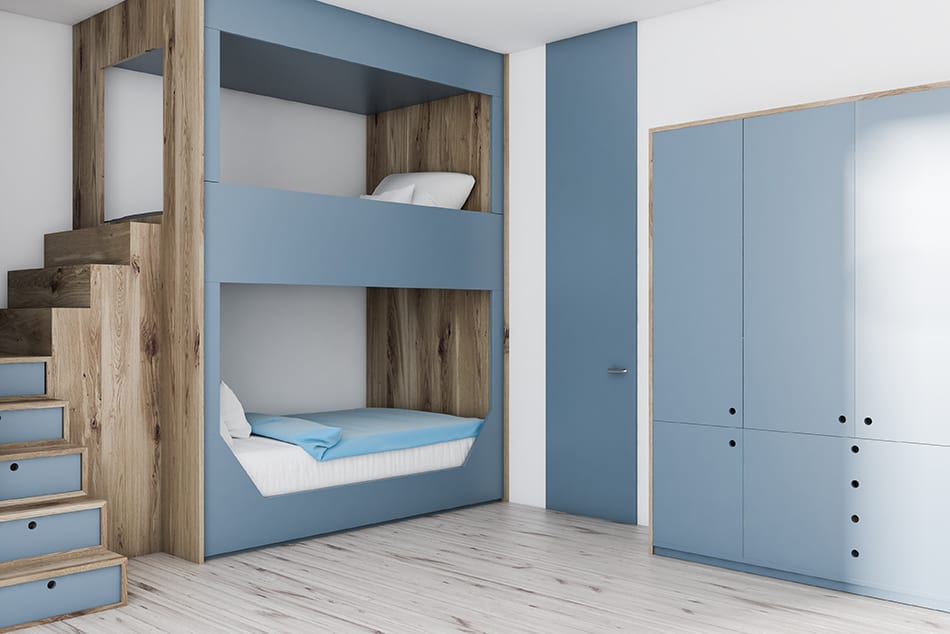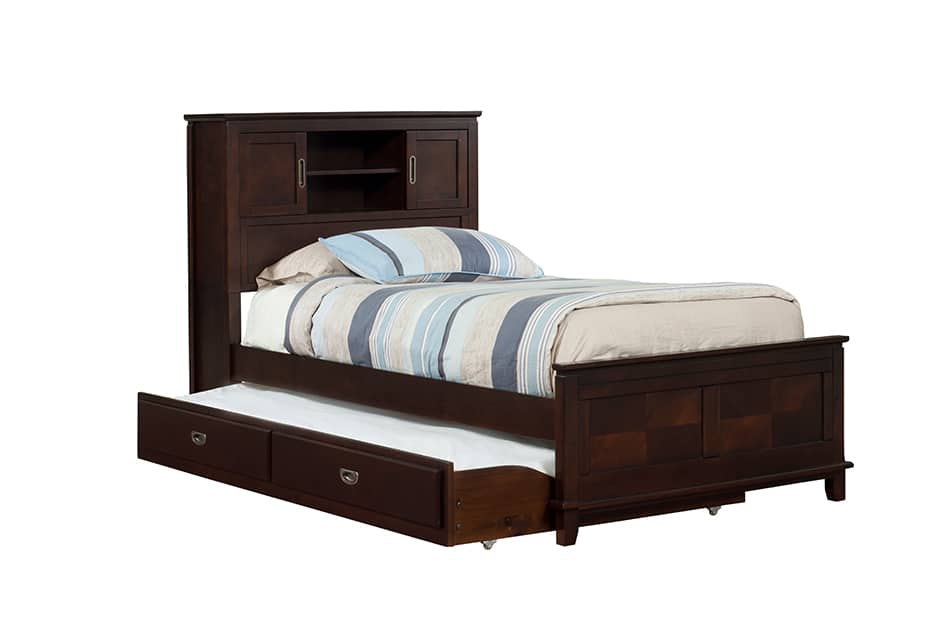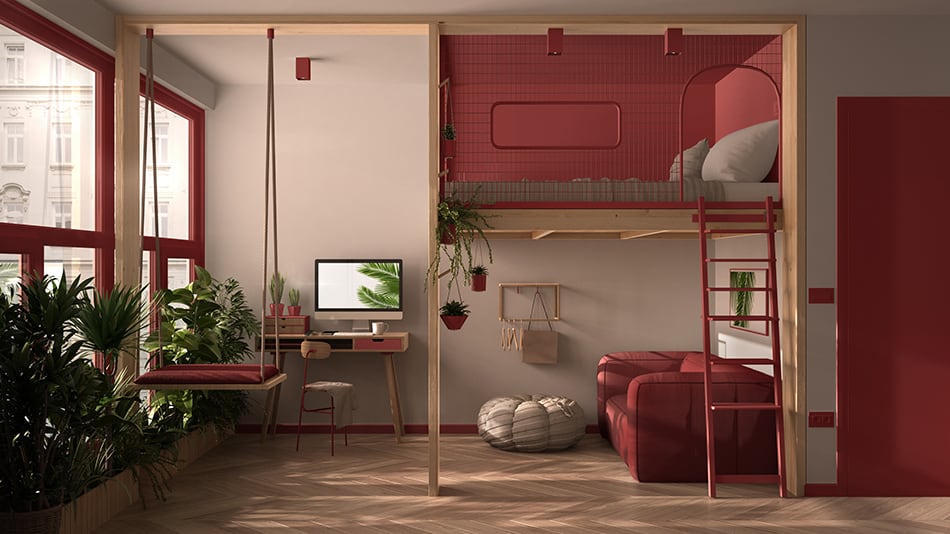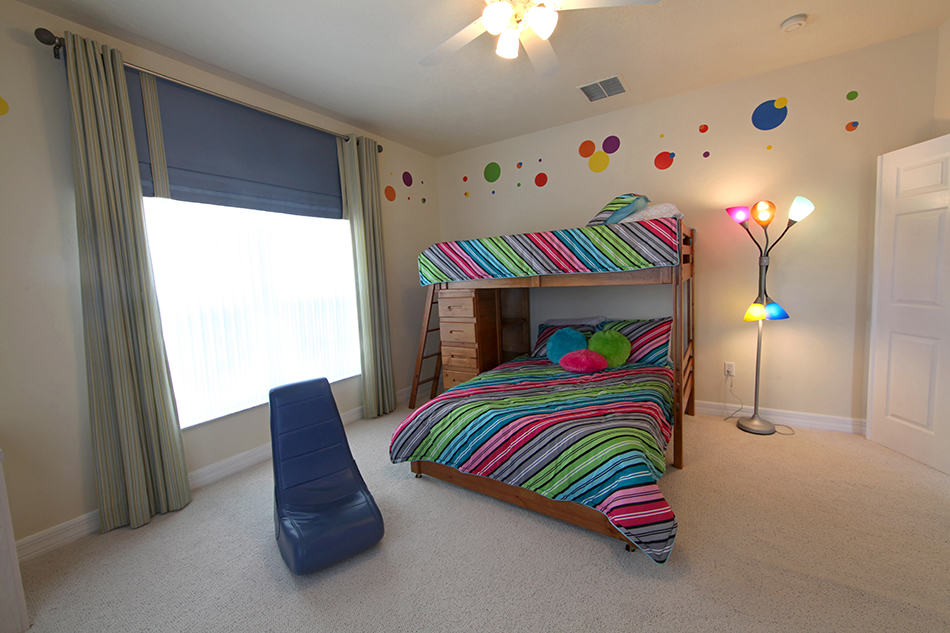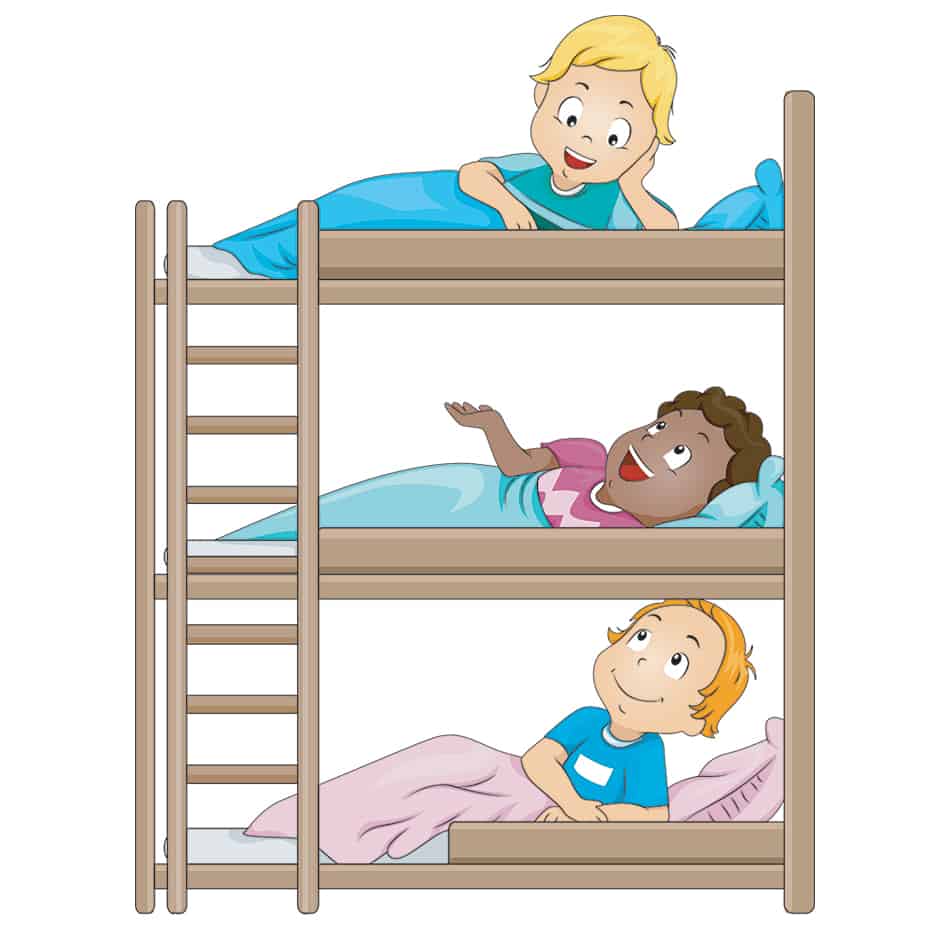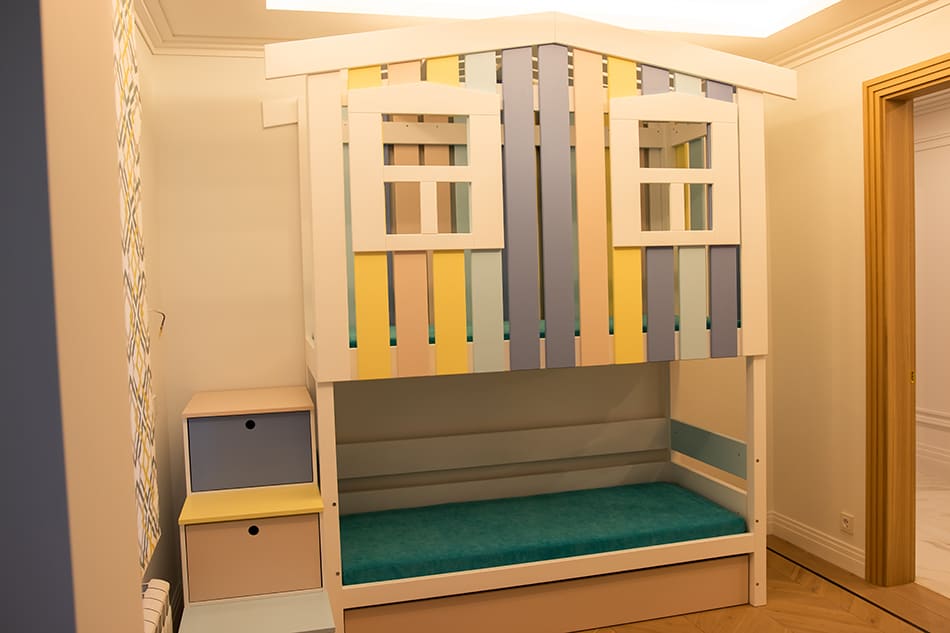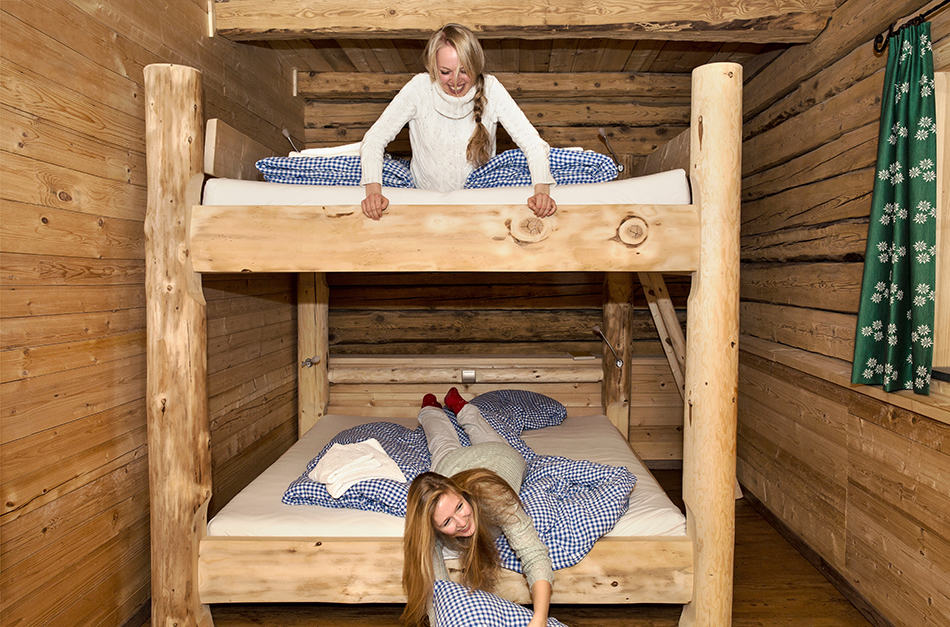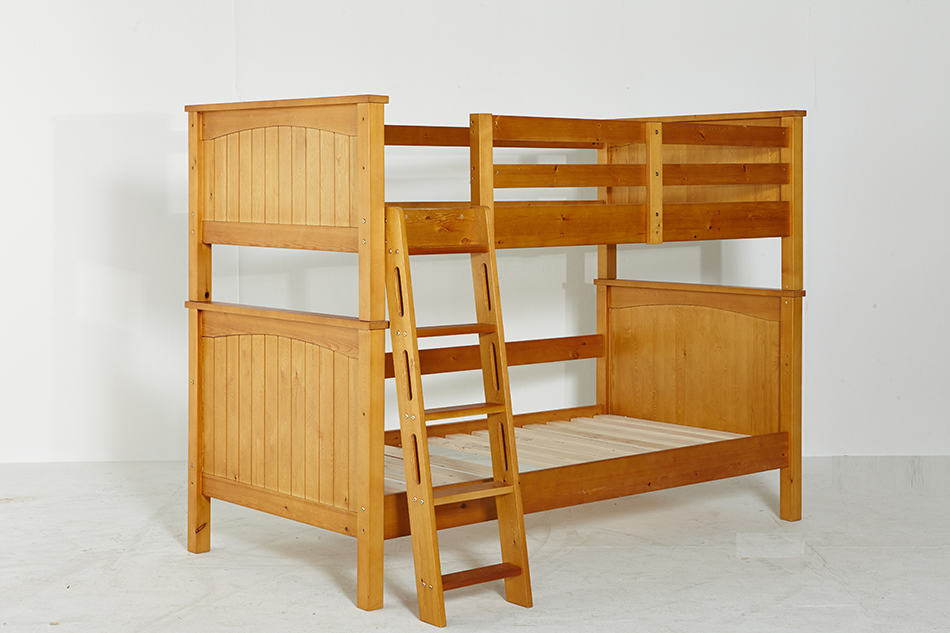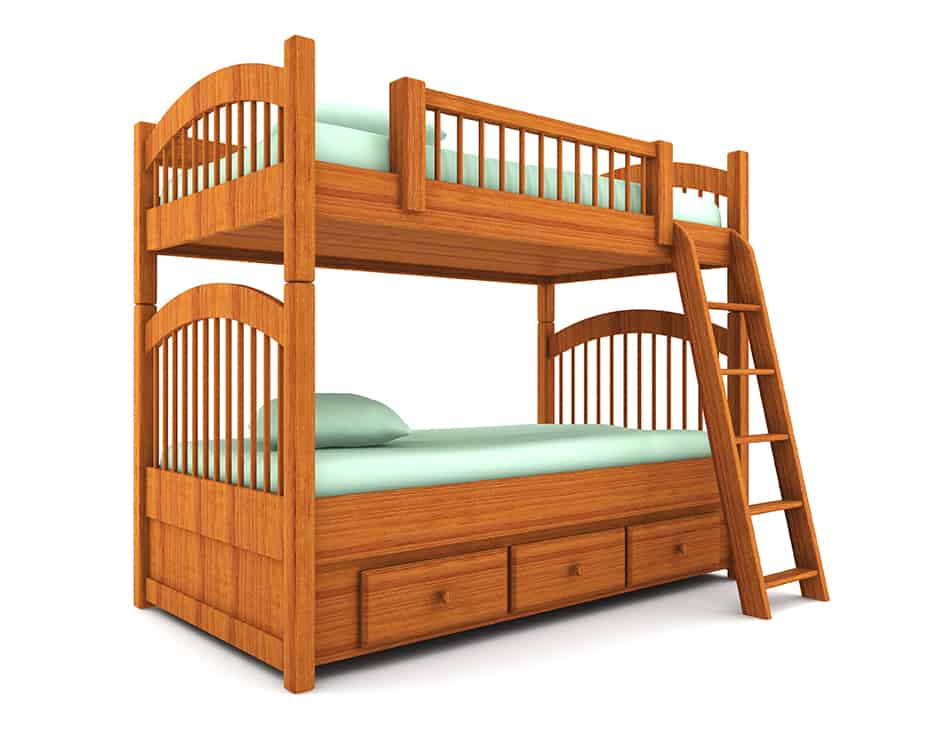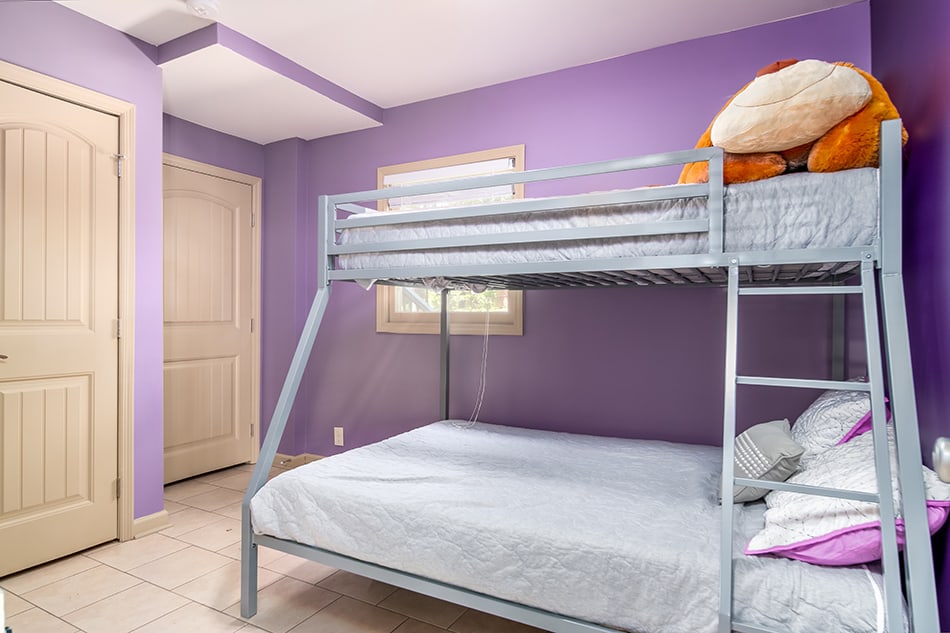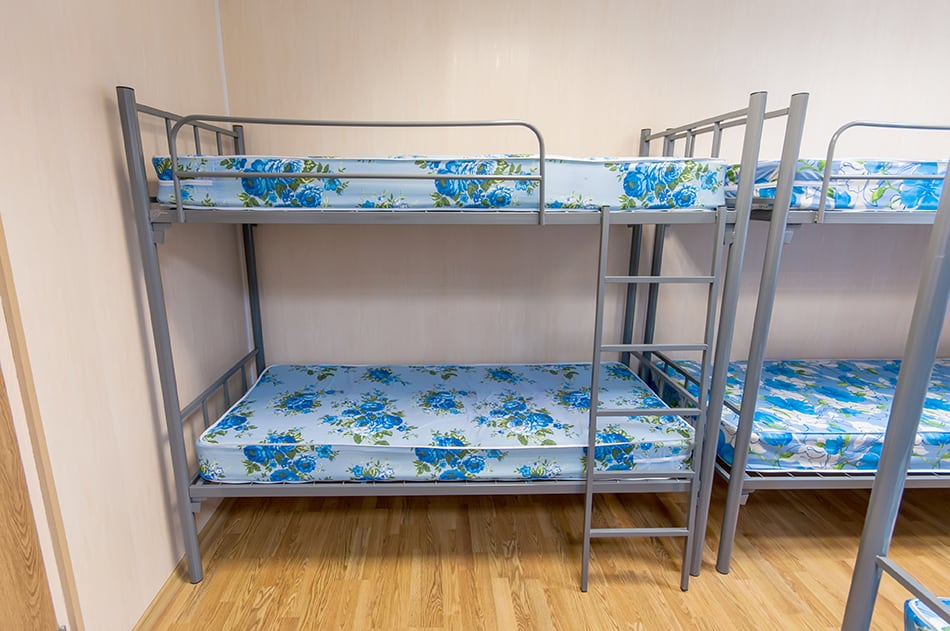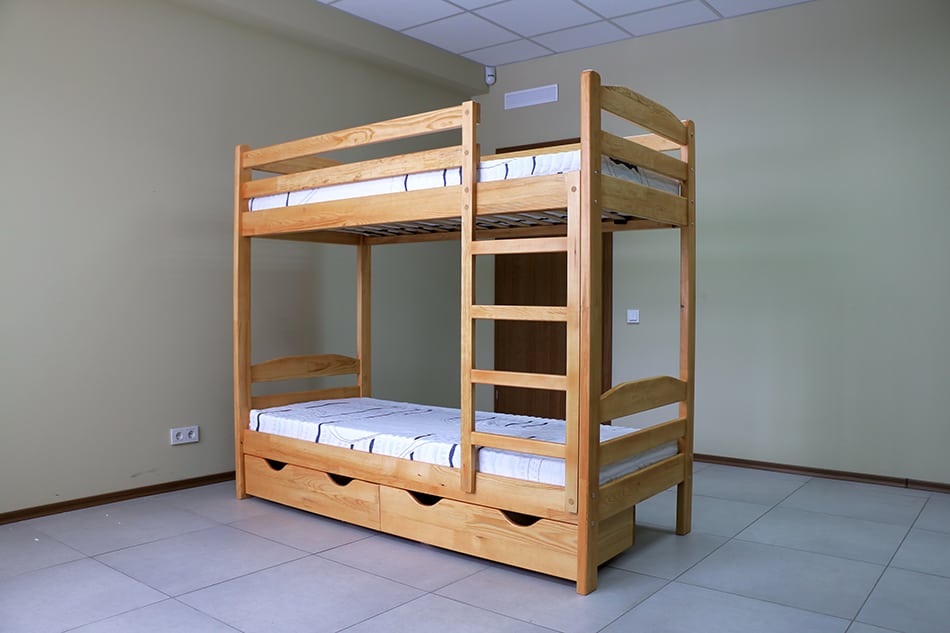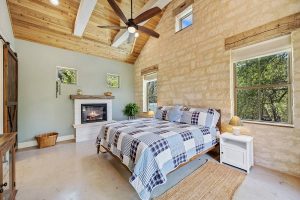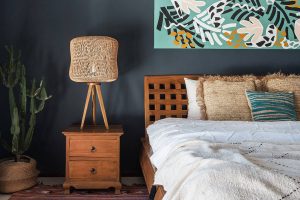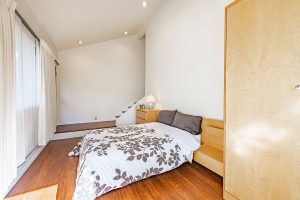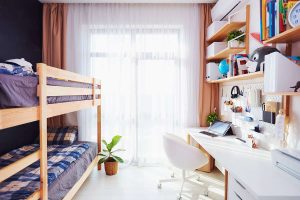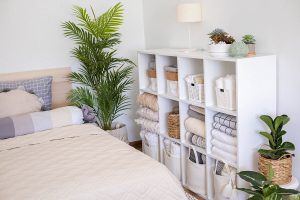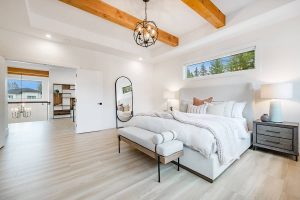For families with several children or who simply like to receive frequent guests and playdates, bunk beds are one of the best ways to save space. Not only do they allow siblings to share a room, but they can also provide a great space to climb, plot, and create mayhem. It should not be surprising, then, that many of us continue to cherish the idea of bunk beds.
That being said, options for bunk beds go beyond a simple space-saving measure. Whether it’s fighting for the top bunk or seeking refuge in the coziness of the bottom one, bunk beds can make or break a bedroom.
What Are Bunk Beds For?
Bunk beds are a particularly good bedding solution in any of the following cases:
- If you have two children who are very close in age
- If there is a cousin or close relative who frequently stays over
- When you need to expand your sleeping space on short notice
- For beach houses or vacation homes that are shared with extended family
- When you need to include more storage space in the bedroom
- If you want to expand a bedroom’s “play area.”
- For kids who want a small “reading nook” built into their larger bedroom
Naturally, not all bunk bed models will address all of these needs. In this guide, you will be able to see, at a glance, which solution is best for your family and purposes. You will also be able to compare the pros and cons of bunk bed materials, plus the esthetic features available for each décor style.
Types of Bunk Beds
Decide which type of bunk bed is right for your kids (or even for your studio apartment)
Basic Bunk Bed
Ideal for: two siblings in a shared dormitory, houses with rapidly-changing housemates
The basic bunk bed almost needs no explanation, as it is the model that immediately comes to our minds whenever we think of bunk beds. The basic parts of a bunk bed consist of two twin beds, one on top of the other, connected by a side ladder that will let you reach the top bed.
Some nicer basic models can be disassembled. In such cases, the ladder acts as a support column, and it can be unscrewed or taken out. In this way, the bunk beds can be easily separated into two twin beds. This can be pretty great if you have older kids about to move out or are used to receiving frequent guests. With just a pair of screwdrivers and someone to help you move furniture around, you will be able to change a room’s layout very quickly.
Built-In Bunk Beds
Ideal for: Summer camps, those who want cozy nooks, dormitories
Built-in bunk beds don’t use an external wooden or metal structure. Instead, the mattresses are placed in nooks built into the wall. Often, they will be surrounded by built-in cabinets or closets. They may use an external side ladder to reach the top bed or even have a couple of steps shaped into a concrete wall.
Built-in bunk beds, built alongside a wall, are a classic look for dormitories and backpackers’ hostels. They allow you to maximize the available space and still create the sensation of privacy. They also allow you to hide sliding drawers or storage areas beneath the bed or around the ladders.
On the other hand, built-in bunk beds are almost always custom-built. This makes them rather expensive at first but opens up endless customization opportunities.
Futon Bunk Beds
Ideal for: adults in city apartments, house guests
For many, bunk beds are very strongly associated with childhood, to the point of rendering them unworthy of an adult home. If you want to keep your guest room flexible and comfortable but don’t have a lot of space to devote to it, a futon bunk bed can be the ideal solution.
A Futon bunk bed replaces the bottom bunk with a foldable futon. During the day, or when there is no need for an extra bed, you can leave it in a futon position and enjoy some extra seating space for the TV or for playing video games. Once you add a few throw pillows, the overall ensemble won’t resemble a boarding school dormitory at all.
Ideally, a well-constructed futon bunk bed should spread out and convert itself into a bed with just a quick pull. Naturally, this is easier said than done, as cheap futons are infamous for getting stuck in an awkward position.
Trundles
Ideal for: two residents plus the occasional guest, middle school sleepovers.
There are clear differences between a bunk bed and a trundle. A trundle modifies the timeless structure of a standard bunk bed by adding a rolling mattress underneath the bottom bunk. Often, this rolling mattress replaces a set of linen drawers, which standard models would often include in the same space. It usually uses casters or rolling wheels to let you “pull out” the extra bed without breaking a sweat.
Trundles are a great way to accommodate an impromptu addition to the household. The third bed may not be a suitable long-term arrangement, though: whoever sleeps on it will be under the permanent threat of being step on by whoever is using the top or bottom bunks if they ever decide to run off to the bathroom in the middle of the night.
You will also need to be extra careful with the linens and bedding to ensure it fits inside the drawer comfortably. Alternatively, you will need to remove the sheets completely as soon as you want to close back the trundle.
Loft Beds
Ideal for: a single person in a studio apartment, tiny homes
Technically speaking, loft beds are not bunk beds. However, they can look nearly indistinguishable from them from afar, as they take advantage of the same overall “stacking” concept. The main difference is that a loft bed is meant for only one person, and it only has one bed.
In a loft bed, the bed is hoisted up by a ladder and a supporting structure. This creates some “empty” space beneath the bed, which can then be used for something else. Most loft bed models use this to add a cupboard, a mini closet, or a study desk.
Loft beds are great for anyone who likes to work in an enclosed, secluded space. They are great for creating additional privacy when there is no space to waste. Other models play around with this idea and take it a step further: rather than a traditional computer desk, they add cushions or reading chairs.
L-Shaped Bunk Beds
Ideal for: Contemporary décor styles, siblings of different ages
Halfway between a bunk bed and a loft bed is the spacious L-shaped bunk. In this model, rather than stacking two beds directly on top of each other, beds are at a 90-degree angle from each other. In many cases, the resulting structure will be T-shaped instead of L-shaped, but it will also provide extra room for a cupboard.
An L-shaped bunk bed often takes up more space than a regular bunk bed. However, as the top bunk won’t be directly supported by the bottom one, it allows each bed to be of a different size. This is great if your kids are not as close in age or if one of them simply feels safer in tight spaces.
On the other hand, L-shaped bunk beds are not easy to adjust, and you probably won’t be able to take the structure apart and use each bed separately. Up to a few years ago, most L-shaped bunk beds were all custom-made, but there are no ready-to-assemble options available.
Triple Bunk Beds
Ideal for: three kids sharing a room, hostel dormitories
Just like their name indicates, triple bunk beds offer space for three beds instead of two. The specific layout can take many forms but most often includes two top bunks at a 90-degree angle between them, plus a lower bunk and some spare floor space.
Custom-built models can include a study desk or closet in this extra space. However, it can also be used for a small reading nook or filled with puffs or inflatable cushions. If you preempt the need to accommodate even more people in the same space, you can also add a trundle.
Finally, triple bunk beds can steer clear from the L-Shaped arrangement altogether and stack all three bunks on top of each other. This option is only recommended for children or homes with very high ceilings: otherwise, whoever sleeps on top will risk constant head concussions.
Styles of Bunk Beds
All the models mentioned above are available in different decorative styles. These usually add decorative elements or play around with textures, materials, and themes. Some of the most common options available include:
Treehouse Beds
Treehouse bunk beds may be L-Shaped bunk beds that add a small “treehouse” or cabin to one side. In other cases, the small treehouse may take the form of a canopy that completely covers the top bunk.
Because of their association with backyards and nature, most treehouse beds are made of wood. Expect to find many dark colors and rough textures meant to imitate the feel of real trees. Green accents or carved leaves and flowers can also be included for those who have the budget for it.
Rustic Bunk Beds
Rustic bunk beds can be very similar to treehouse beds. In many ways, these two styles may overlap each other. Rustic bunk beds are often made to match cottage-style rooms or dormitories.
The idea is for the resulting bunk bed to look like it belongs in a remote wood cabin. Because of this, they are mostly made of unpolished wood. They may also add other details, such as carved ladders.
Farmhouse Bunk Beds
The farmhouse and ranch styles are also closely connected to nature. However, they deviate from rustic or treehouse bunk beds in that they privilege lighter-colored woods. They are also more prone to use smooth or polished wood.
For example, a farmhouse bunk bed may copy the look of white picket fences for its ladder. Alternatively, the top bunk may try to resemble a ranch gate or the jumping obstacles usually set for horses.
Vintage Bunk Beds
Grander Georgian or Victorian homes may not look right, with a piece of the wood hiding inside one of the dormitories. However, bunk beds can also be adapted to match these vintage styles. In these cases, one of the easiest ways to alter the style of the bunk bed is to paint the wood in an appropriate color. Designers can also try to carve additional décor accents into the pillars or ladders.
These choices are rarely considered kid-friendly, but they are becoming increasingly popular for adult loft beds.
Contemporary Bunk Beds
For homes that prefer a futuristic or industrial style, you can play up with steel structures and paved glass accents. If done appropriately, you may be able to get a loft bed that looks like it came out of a spaceship. If not, you may run the risk of making your bedroom look like a cubicle farm.
Bunk Beds Materials
Bunk beds are almost always made from either metal or wood. Some custom models may include accents in synthetic materials or glass. Let’s take a quick look at the advantages of each.
Metal Bunk Beds
When they are made of metal, bunk beds almost always use steel or aluminum alloys. Surprisingly, metal bunk beds tend to be lighter than wood models, which is great for families that move frequently. Steel is also friendlier towards modular constructions or additions such as trundles.
On the other hand, metal is often cool to the touch, which may be uncomfortable for a sleeping area. If you live in a humid region, you will also need to ensure it doesn’t rust.
Wood Bunk Beds
Wood is possibly the most popular material for home furniture in general, and bunk beds are no exception. Quality hardwood can last a lifetime. In addition, wood provides a type of warmth and coziness that cannot be achieved with any man-made material.
On the other hand, wood bunk beds are often much heavier. They also need proper maintenance to look good. They are also pretty easily damaged by naughty children with pointy objects. That being said, it is likely that carving your initials in your childhood bed will just add to the sentimental value of your bunk bed.
